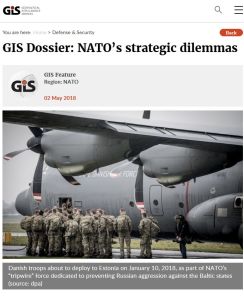Únase a getAbstract para acceder al resumen.

Únase a getAbstract para acceder al resumen.
Expert
GIS Dossier: NATO’s strategic dilemmas
GIS, 2018
¿De qué se trata?
Increased Russian assertiveness is reviving NATO’s original purpose.
Recommendation
NATO came to life as a defensive alliance to thwart Soviet communist expansion. Rather than declaring itself obsolete in the wake of the Soviet Union’s collapse, however, NATO began to focus on new security challenges, including cyber-defense, terrorism and human trafficking. Yet Russia’s intervention in Ukraine has partially revived NATO’s original role. getAbstract recommends this dossier by the Lichtenstein-based Geopolitical Intelligence Services (GIS) to those seeking an overview of NATO’s shifting challenges.
Summary
About the Author
GIS is a Lichtenstein-based publisher of geopolitical forecasts and analyses.


















Comment on this summary